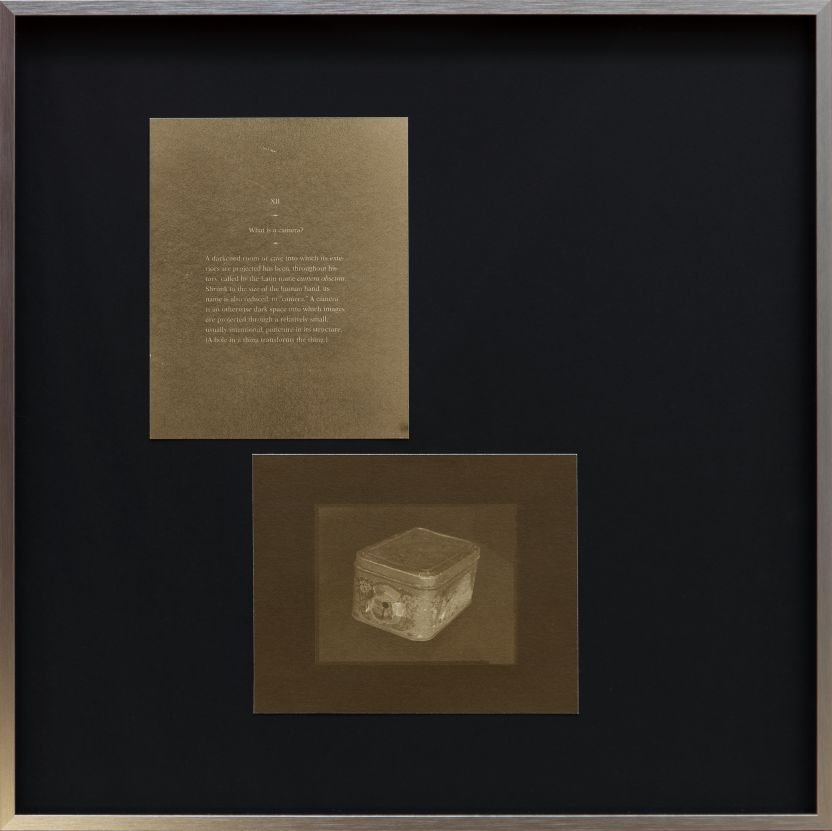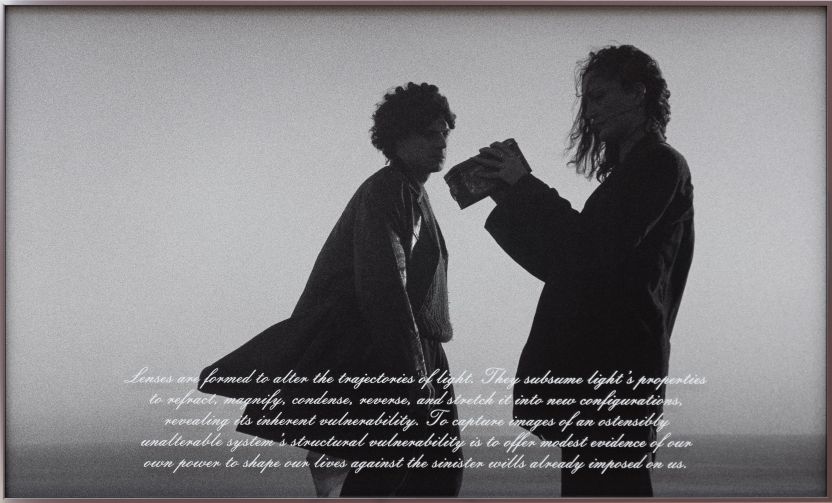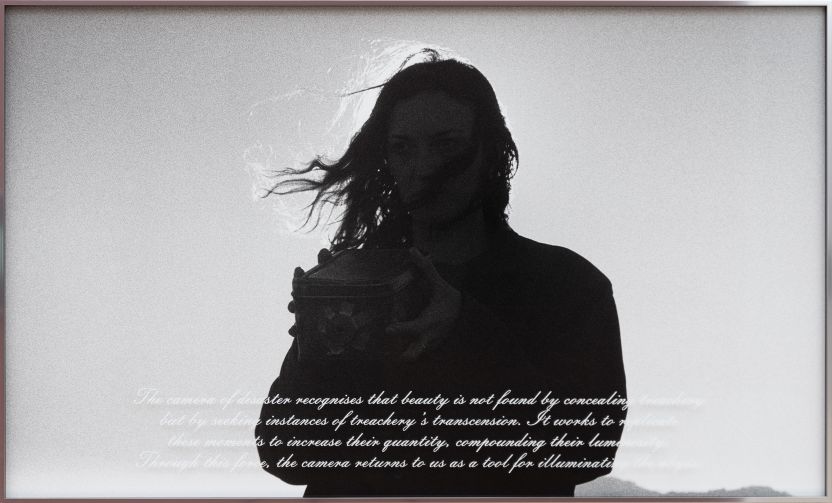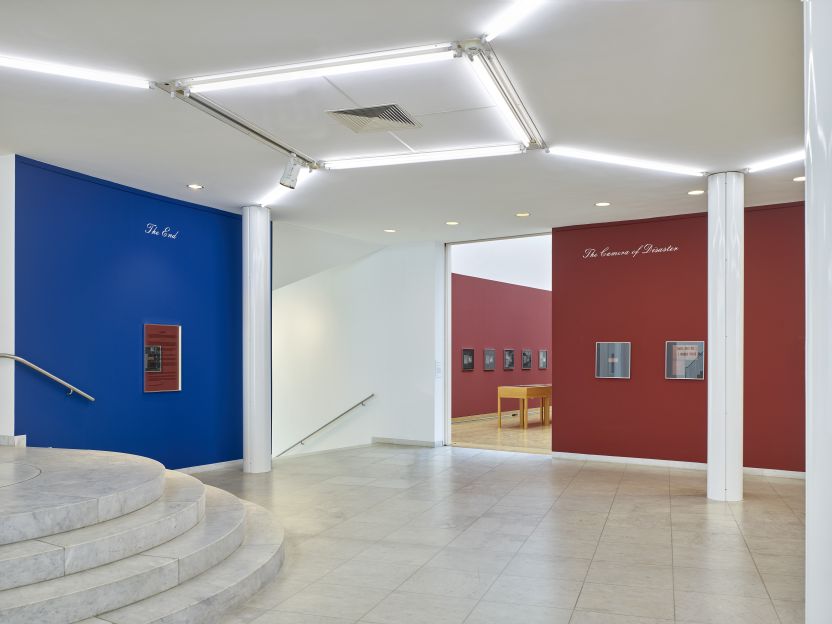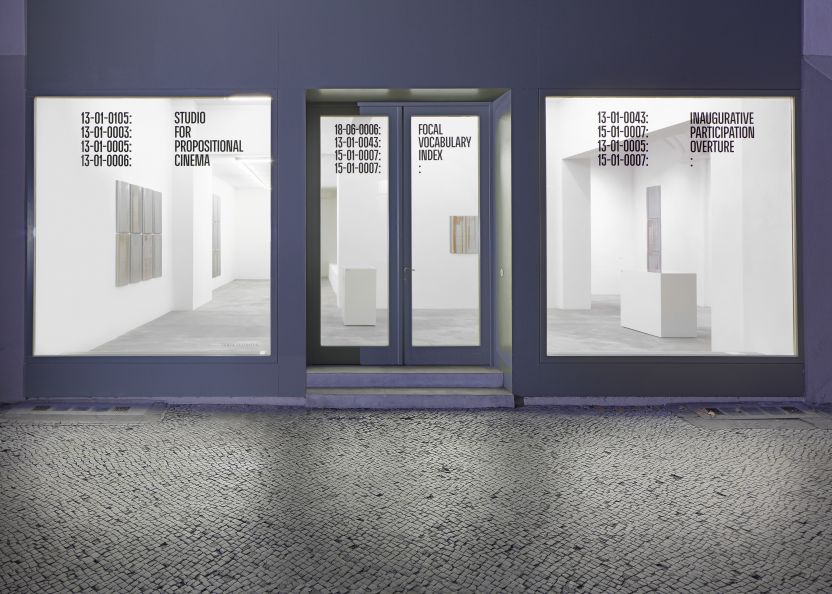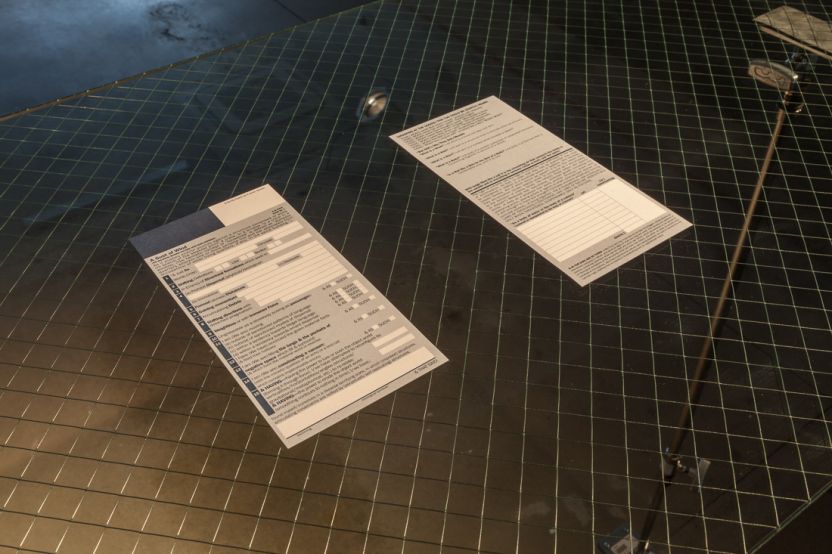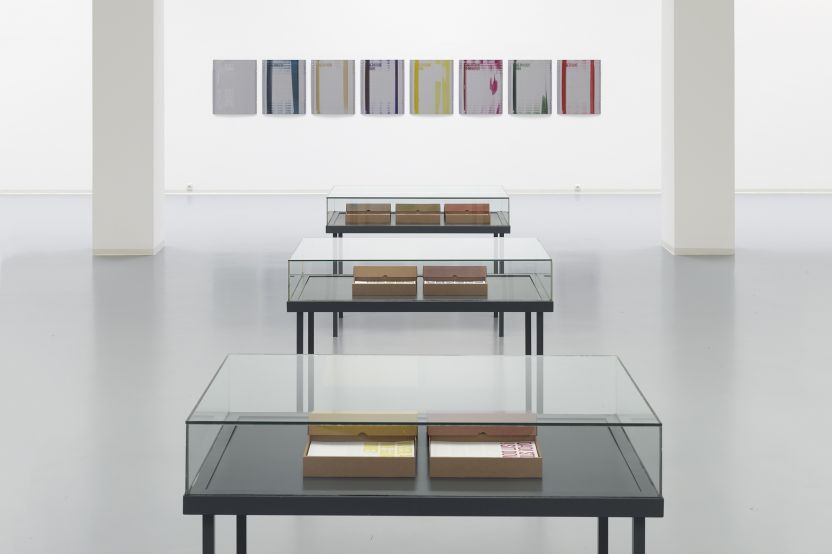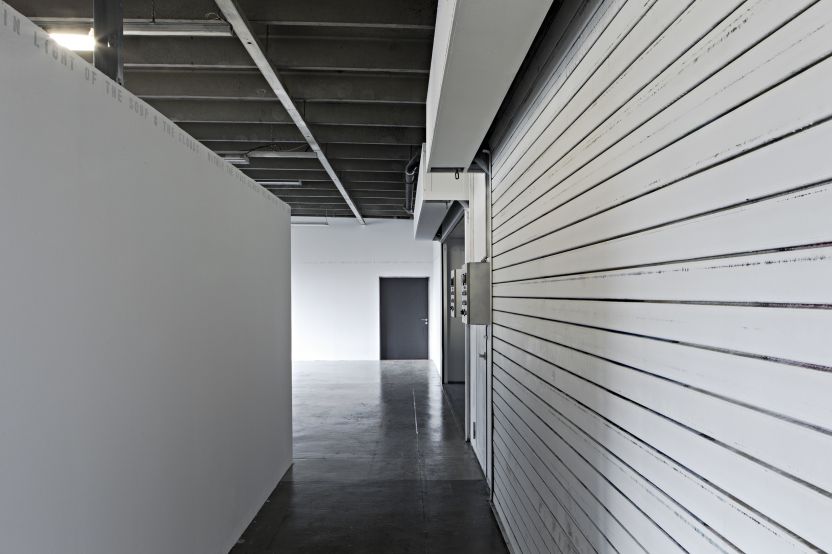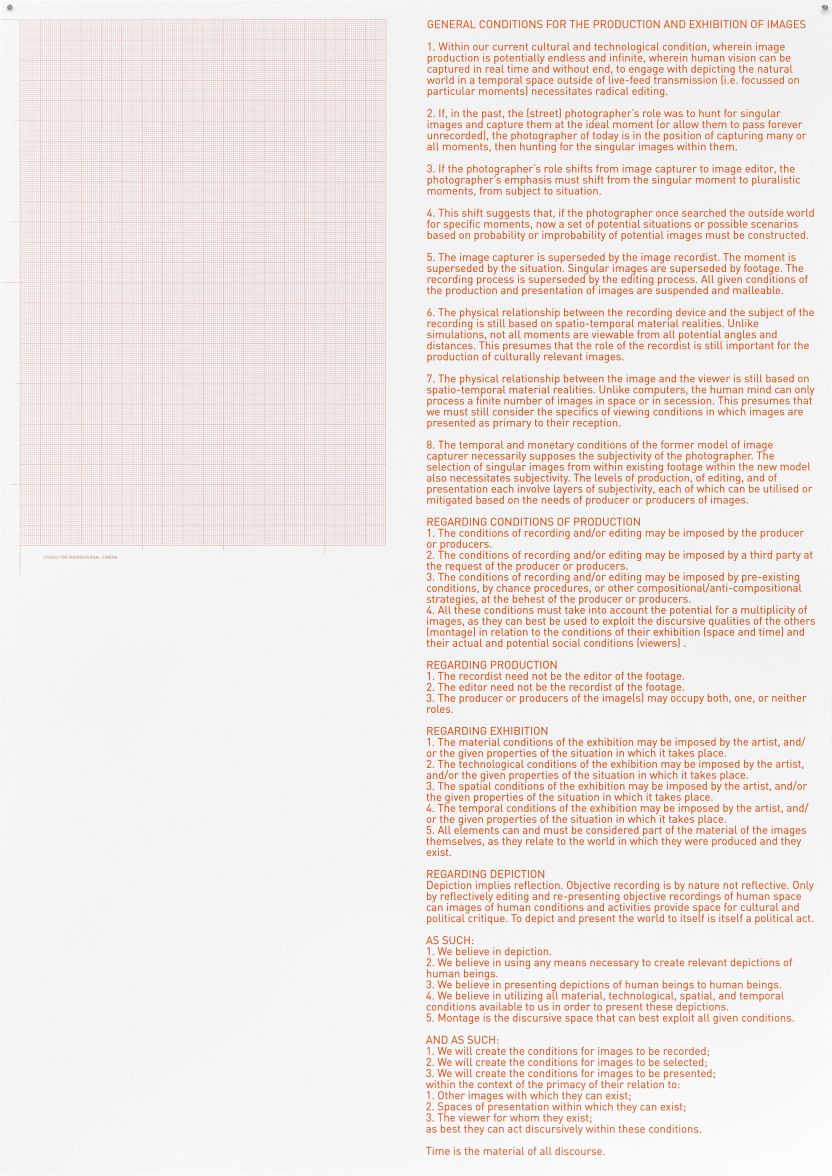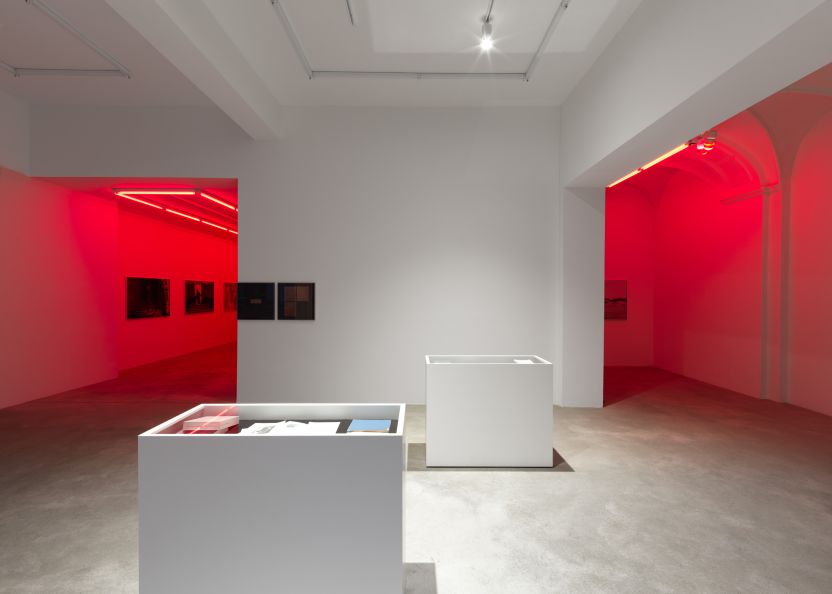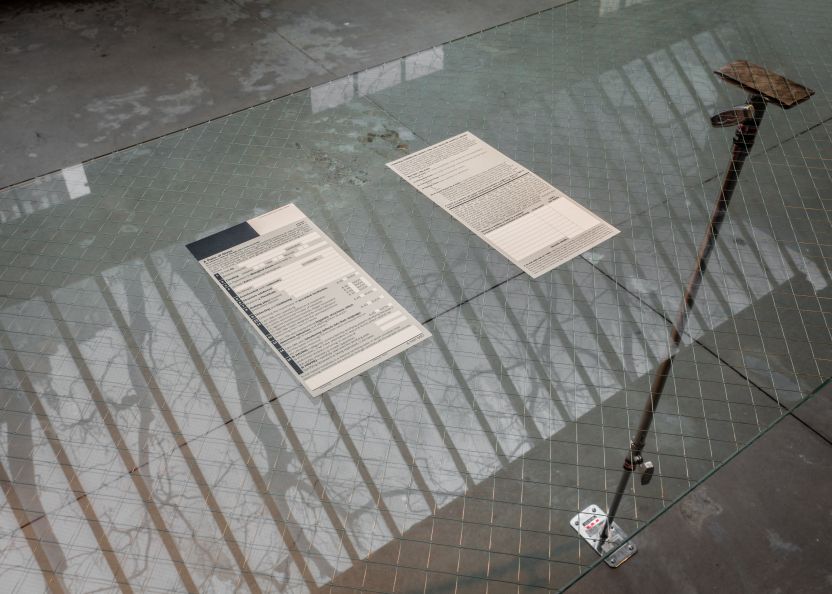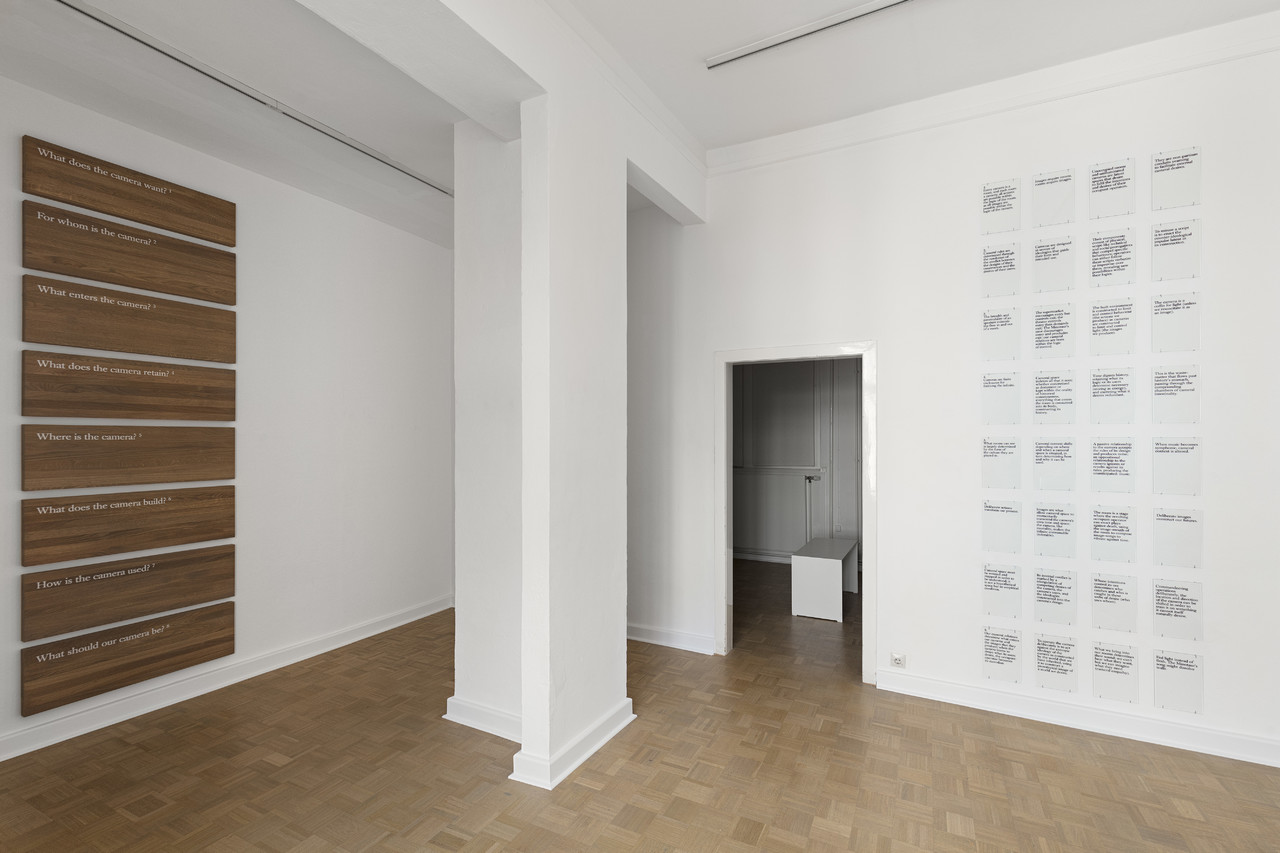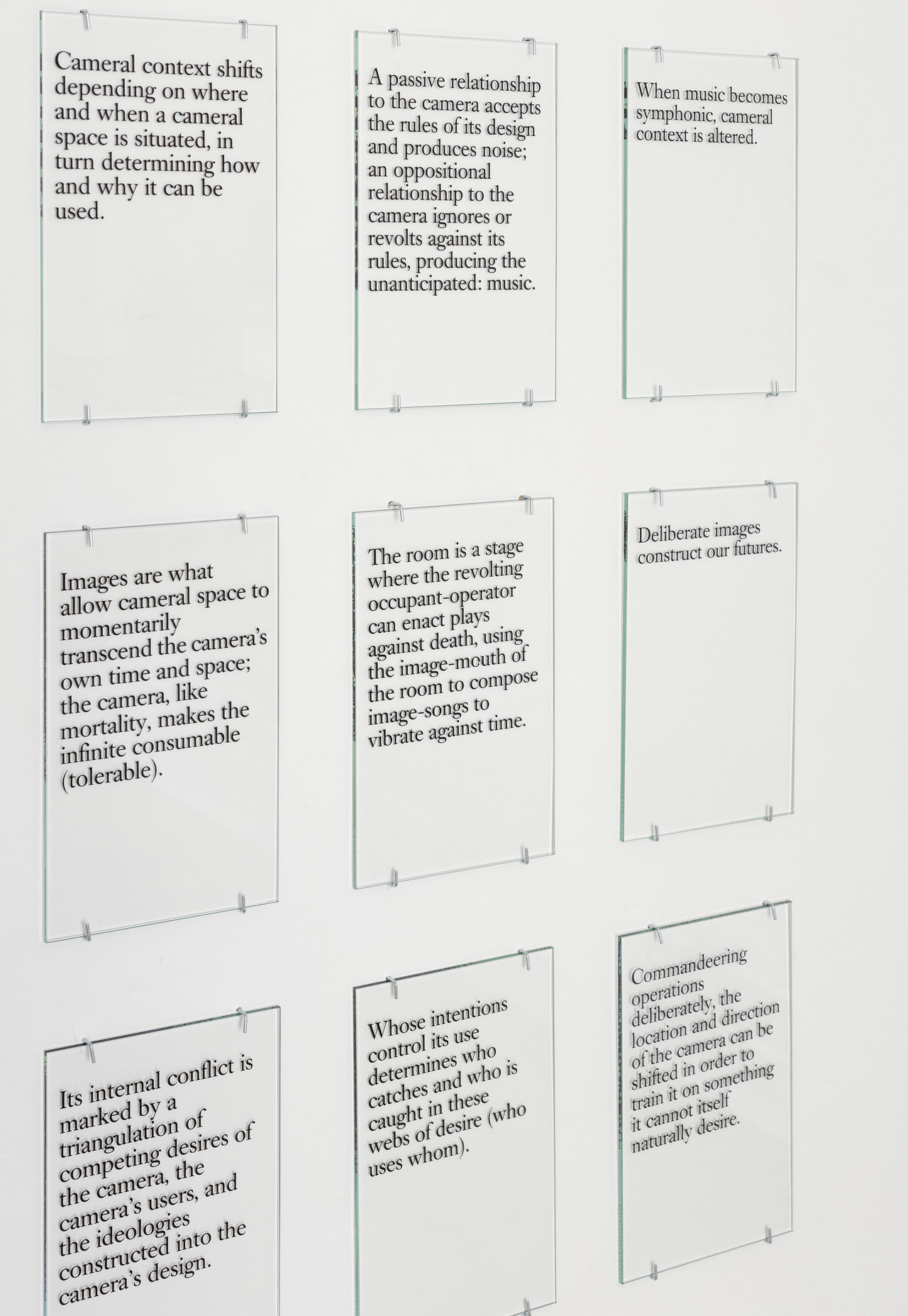What does the camera want? 1
For whom is the camera? 2
What enters the camera? 3
What does the camera retain? 4
Where is the camera? 5
What does the camera build? 6
How is the camera used? 7
What should our camera be? 8
1.
Every camera is a room, and each room a camera; all actions are possible within the logic of the room, as all images are possible within the logic of the camera. Images require rooms, rooms acquire images. Unoccupied rooms and unilluminated cameras are latent spaces that desire to fulfill the intentions and desires of their occupant-operators. They are non-partisan conduits yearning to facilitate external cameral desires.
2.
Cameral rules are determined through the resolution of the conflict between the designs of their constructors and the desires of their users. Cameras are designed in service of ideologies that guide their form and intended use. Their components consist of physical, script-like technical and social prerogatives that compel specific behaviours; operators can either follow these scripts verbatim or improvise over them, revealing new possibilities within their logics. To misuse a script is to enact the counter-ideological impulse latent in its construction.
3.
The breadth and penetrability of an aperture controls the flow in and out of a room. The supermarket encourages entry but controls exit; the theater controls entry then demands exit; The Minotaur’s cave discourages entry and precludes exit: our cameral relations are born within the logic of control. The built environment is constructed to limit and control behavior (the actions we produce) as cameras are constructed to limit and control light (the images we produce). The camera is a coffin for light (unless we resuscitate it as an image).
4.
Cameras are finite enclosures for finitising the infinite. Cameral space indexes all that it sees; whether concretized as document or kept within the orality of historical consciousness, everything that enters the room is consumed into its body, constructing its history. Time digests history, retaining what its logic or its users determine necessary (storing as energy), and excreting what it deems redundant. This is the waste-matter that flows past history’s stomach, passing through the compounding chambers of cameral intestinality.
5.
What rooms can see is largely determined by the form of the culture they are placed in. Cameral context shifts depending on where and when a cameral space is situated, in turn determining how and why it can be used. A passive relationship to the camera accepts the rules of its design and produces noise; an oppositional relationship to the camera ignores or revolts against its rules, producing the unanticipated: music. When music becomes symphonic, cameral context is altered.
6.
Deliberate actions transform our present. Images are what allows cameral space to momentarily transcend the camera’s own time and space; the camera, like mortality, makes the infinite consumable (tolerable). The room is a stage where the revolting occupant-operator can enact plays against death, using the image-mouth of the room to compose image-songs to vibrate against time. Deliberate images construct our futures.
7.
Cameral space must be entered and mapped in order to be understood; it is not a hypothetical space but an empirical condition. Its internal conflict is marked by a triangulation of competing desires of the camera, the camera’s users, and the ideologies constructed into the camera’s design. Whose intentions control its use determines who catches and who is caught in these webs of desire (who uses whom). Commandeering operations deliberately, the location and direction of the camera can be shifted in order to train it on something it cannot itself naturally desire.
8.
Our cameral relations determine what enters our cameras and the images that they produce; when the camera learns to desire what its users desire, the occupant-operator becomes its custodian. To operate the camera deliberately is to act against the entropic ideology of the camera as constructed by the world that we have inherited, using it to construct a prototypical image of a world we desire. What we bring into our rooms determines their sound; we can’t hear what they want, but we can imagine what they need (cameral empathy). Fed light instead of flesh, the Minotaur’s song might dissolve walls.


